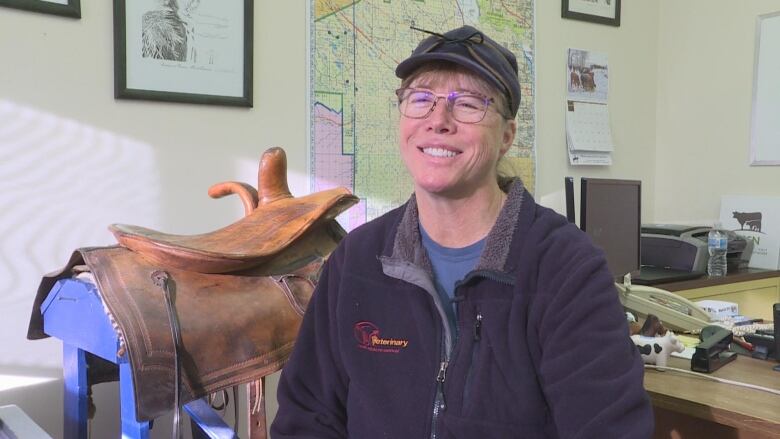Don't feel bad for cows grazing in 40 weather they've got a secret weapon
Cattle bodies are uniquely equipped to stomach the bad weather
This story was originally published in 2020. Given the similarly frigid temperaturesthat descended over Alberta on Dec. 20, 2022, it has beenresurfaced today.
Even though Alberta is posting frigid temperatures these days, it's business as usual for local cattle, who bravely stand their groundeven as the rest of us retreat indoors.
You may feel some empathy for these animals as they stand strong through the deep freeze but the cow is a durable animal, equipped with certain weaponry finely tuned against even the bleakest winter wind.
Exhibit number one: an internal furnace that can't be beat.
Cherie Copithorne-Barnes, who ranches west of Calgary, is responsible for feeding that furnace with plenty of coal.
- Watch the video above for more on howcattle cope in the cold.
"If you give them enough feed, enough protein and energy, their stomachs generate heat. Even 40 C is no problem as long as they've been given the correct rations and feed to eat," she said.
The saddest sight of all cattle standing around in frigid temperatures, covered in ice and snow is actually a good sign.
"Cows have a layer of fat and hair that acts like insulation thatis no different from your house,"Copithorne-Barnes said. "When you see them covered in snow, that tells you the heat is not escaping from inside their bodies and that's exactly where you want them to be.
"It's when you see them without that frost and snow in these temperatures when you really have to worry. Because heat is escaping and they're getting cold."

Plenty of food, plenty of water
Native grasses will even serve as suitable fuel, Copithorne-Barnes said, as long as farmers have prepared the field ahead of time.
"You need to supply them with a little bit of shelter and the proper feed source," she said. "Water is another important one when it gets this cold."
To no one's surprise, water can be an interesting challenge for ranchers in 40 C weather.
"For sure, we'll cut anywhere from four to six inches of ice off water troughs, even with heat on them," Copithorne-Barnes said. "The cattle will keep it open as they come to feed.
"You just need to make sure the timing of when you open the water coincides with when they want to come for a drink. It's usually after they've been fed."

Keep a watchful eye
But though a cow's digestive system is its best defence against the winter weather, it's not foolproof so ranchers need to keep a close eye on their livestock when temperatures dip.
"These cattle are our livelihoods. When they are affected negatively, we're affected negatively,"Copithorne-Barnes said. "You need to be watching your animals every day to make sure you don't see drastic changes, or if there are individuals that need help."
Particular focus should be paid to those animals that are thin, as they get colder faster compared to those with more fat.
Cattle can also lose body weight daily during cold weather, making it extra important to ensure their food supply remains well stocked.
In the end, the fact that the animals can survive in unforgiving temperatures really comes down to genetics,Copithorne-Barnes said.
"They have hooves so they can handle the cold. They have hair that grows," she said. "When the genetics aren't there, they don't make it through the winter."
With files from Terri Trembath













_(720p).jpg)


 OFFICIAL HD MUSIC VIDEO.jpg)
.jpg)



























































































